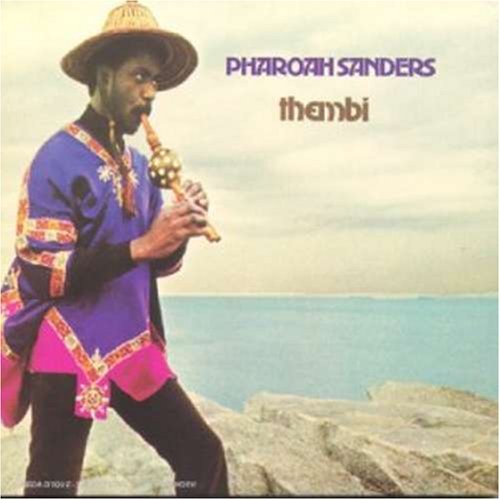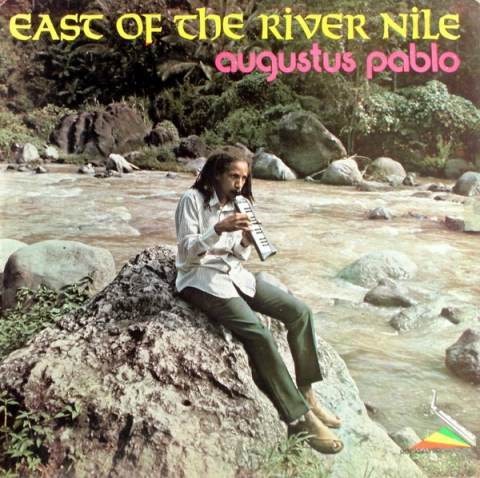Part One: Pharoah Sanders

Maybe you have to be a Jazz aficionado to get excited by an album cover, but come on: How can you not love this? How can an album that looks like this not be brilliant? And here’s the thing: Yes, it was the ’70s (1971 to be exact) and yes, plenty of musicians (and artists) outside of the Jazz idiom were fully, if superficially, embracing Eastern (in general) and African (in particular, particularly within Jazz) culture. Then, and now, whenever an opportunistic interloper tries to straddle the line between the exotic and the trendy, it’s simple to see through the charade and the results are accordingly painful–for all involved.
Suffice it to say, in Pharoah Sanders’ case, this eastward glance was neither cursory nor commercially-minded. Continuing along the path his mentor John Coltrane strode in the previous decade, Sanders focused less on the shrieking and more on the cerebral. Although there are some obligatory saxophonic fireworks on Thembi, there are also some extraordinarily peaceful and meditative moments. Arguably, he reached an ideal balance on this effort, which some hail as his masterpiece and others decry as an uneven mess. But even the haters have to recognize that the title track, the ethereal “Astral Travelling” (below) and the astonishing Cecil McBee bass solo “Love” are some of the better recorded moments of the ’70s.
Part Two: Augustus Pablo

Art imitating art (or, to be more precise, album cover imitating album cover)? Perhaps. But just as Thembi is arguably better but less known than Sanders’ enduring classic Karma (which, of course, featured Leon Thomas singing and yodeling and is either hopelessly aged or ageless, depending on one’s tolerance for that peace and love late-’60s vibe; the music, on the other hand, is unassailable), the late, great Augustus Pablo (Horace Swaby) is best known for the masterful King Tubby Meets Rockers Uptown. But as hardcore reggae enthusiasts are well aware, his shining hour may well be East of the River Nile. Like Thembi (and, again, like a great deal of Jazz and reggae from this era) the fascination with African roots is front and center. One reason these albums remain convincing, aside from the obvious genius of the assembled musicians, is the lack of words: the invocation of other places is purely sonic, and is able to impart an authenticity based on acumen and not affectation. You can hear it, as well as feel it. It’s never forced and it’s utterly honest. This is music that these men had to make, and that is how the best art is always created.
Aside from the obvious (and, to me, delightful) similarities of the two album covers, these albums seem to accrue additional layers of meaning and applicability during the summer months. Perhaps that is because I always associate them with the great summer of 2000, when I finally acquired CD versions of both after having made due with crappy cassette copies for entirely too long. To be certain, this is 365-day-a-year music, but if you are going to discover either of these albums for the first time, now is an ideal time to experience some upfull living, summer-style.
Upfull Living
Nature Dub
